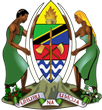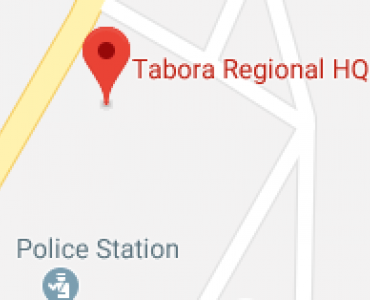Geographical Location
Uyui District is among the six districts of Tabora region. Most parts of the district are located in the central part of Tabora region, and surround Tabora Urban/Municipal Council The district, shares borders with Igunga and Nzega districts in the North, Sikonge district in the South, Urambo on the West and Iramba district of Singida region lies on the eastern side of the district. In terms of international identification, the district lies between latitudes 05004’ and 06015’ south of the Equator and between longitudes 32015’ and 32000’ east of Greenwich and a total surface area of 13,453 sq. kms.
Climate, Soil and Topography
With exception of very few slopes, the district is relatively homogeneous with gently undulating plains intersected by seasonally flooded valley bottom soil. In the extreme north east this pattern gives way to open flat land suitable for cultivation and covered by well or moderately drained soils with textures of sandy loams. The soils vary between red lateritic earth grey sand to silt hardpan and iron crust “mbuga”. Moreover, there are sandy clay loams and reddish coloured soils on inter flute slopes that are saturated with water within 100cms of the surface during the growing season. The majority of these soils have high nutrient contents and are considered suitable for a wide range of food and cash crops and therefore have the potential for profitable cultivation. Uyui district soils can best be described at best as moderately fertile.
The district receives rainfall of between 750mm and 950mm annually, falling between the months of October or November and December and a dry season from January to February or March and a second lower peak occurs in February or March and the rains then tail off in April or sometimes May.
Drainage System
Uyui district forms part of the vast central plateau of Tabora region, an area of flat and gently undulating plains broken in places by prominent hills. Most parts of the district lie between 1,100 meters and 1,200 meters above sea level and form the main watershed separating rivers flowing north eastward into the Manonga River and the Wembere Swamps.
The district harbours the second largest basin in the region, that of the Manonga river and Wembere Swamp, draining ultimately into Lake Eyasi.
Population Size and Growth
Unlike other districts in Tabora region, the population of Uyui District has experienced significant growth. The district’s average annual growth rate of the population during the 1978 to 1988 intercensal period is not shown as there is no population data for the district for 1978. According to the 2002 Population and Housing Census the district had 281,101 people compared to 131,247 inhabitants counted in 1988 Population Census resulting in a big increase of 149,854 people or an average annual growth rate of 3.5 percent during intercensal period. The projections for 2007 put the district population at 300,949. Out of which, females account for 51.3 percent of the population. Table 1.3 shows the population size and its growth for Tabora region and its districts for the census years of 1988 and 2002.
Agriculture
Despite agriculture being the main activity of most of households of Uyui district, it still shows no promising development. Most agriculture households engage in small scale farming and only a few of them are engaged in large scale farming.Hand equipments are the major tilling tools in small scale farming while tractors are used in a few available large scale farms. In the year 2007 the district was estimated to have about 470,700 hectares of arable land of which 32 percent was already being planted with both food and cash crops.
The major constraint in production is the low average rainfall which has made the district with no choice but largely rely on crops which are favoured by such climates. Maize which is the major food crop grown in the district is favoured by this climate. Other drought resistant crops principally grown are cassava, sorghum, groundnuts, tobacco and cotton. Paddy produced in some wards of the district is dependent on rainfed floods and hence it is grown entirely in low lying lands. It is normally transplanted in January and February during the long rain season.







